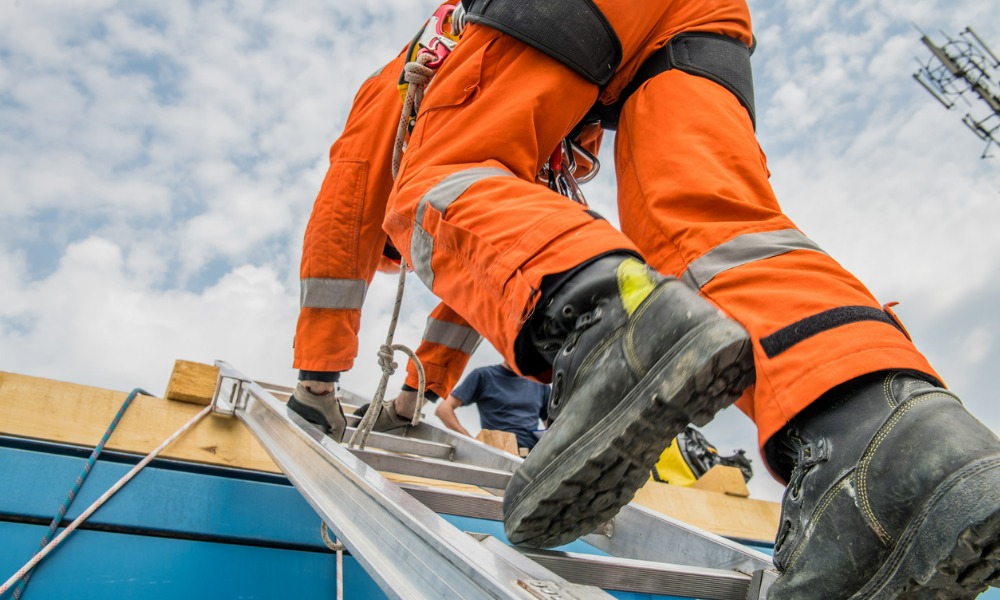Foot injuries make up 10 per cent of all reported workplace injuries

Foot injuries are very common the workplace. According to the Pedorthic Association of Canada, foot injuries make up 10 per cent of all reported disabling injuries in the workplace in Canada. And the National Occupational Health and Safety Resource says that two out of three workers in Canada suffer from some kind of foot problem in their lifetime.
With foot injuries being so common, how can employers and safety professionals best adapt the workplace and equip workers with the right tools to ensure optimal foot safety? Here are three ways to prevent foot injuries at work.
1. Educate yourself on foot injuries. There are actually a number of injuries or issues that can affect workers' feet. This is why employers need to have a solid understanding of what these potential problems are, so they are able to put the best control measures in place.
The Canadian Centre for Occupational Health and Safety (CCOHS) says that there are two big categories of workplace foot injuries. Firstly, foot injuries from punctures, sprains, crushing and cuts (or lacerations). The second group is injuries including those stemming from slips, trips, and falls – one of the most common hazards in the workplace.
According to UFCW Canada, prolonged standing can also have serious consequences, saying "while they may not be considered major workplace injuries, they do have adverse health and safety consequences for workers. Workers who are tired and suffering are less alert increasing the risk of incidents." This is an issue especially in the manufacturing and retails industries where workers are often on their feet all day.
The CCOHS says that there are some problems which are prevalent in all industries, these include aching feet, blisters, calluses, corns, and even fungal infections – these particular issues can stem from hot and humid environments and non-porous footwear.
2. Better understand your environment. Many workplace injuries are borne from the way workers interact with their environment, and foot injuries are no different. The CCOHS says that to improve foot safety in the workplace, job, and workplace designs "have the potential to increase foot safety in workplaces that are specifically hazardous."
For example, keeping a workspace clean and tidy will help prevent unnecessary slips or trips. For those standing up all day, workstation design should allow the employee to freely change body position. The CCOHS also says that the kind of floor an employee is working on can impact foot safety, "standing or working on a hard, unyielding floor can cause a lot of discomfort." Different floor materials or properly fitted matting could help reduce incidents.
3. Equip your workers with the right PPE. Writing for COS, Linda Johnson says that "if a hazard assessment shows that foot hazards are present in the workplace, workers will need to wear safety footwear." This is broadly the case for heavy industries such as construction, oil and gas, mining, or forestry – but workers who may not face a constant risk of foot injury may also need to wear protective footwear.
“Over the last couple of decades, the type of industry or environment in which you’re now required to wear them has been broadening. In the past, salespeople working in the office and who occasionally went onto the shop floor would wear their regular shoes. But regulations have tightened up, and they’re now mandated to have a pair of safety footwear on if they go onto the shop floor,” said Graeme Hill, owner and operator, Reddhart Workwear Stores to COS.
While shoes aren't the only bit of PPE that can be used to protect a worker's feet, they are certainly the most common. There are a few standards around footwear in Canada, but generally OHS regulations in most jurisdictions in Canada require footwear to meet the requirements of CSA Z195:14 Protective Footwear. And as with any other bit of PPE, the shoes should fit properly and be comfortable for the wearer (and allow space for socks or arch support).





